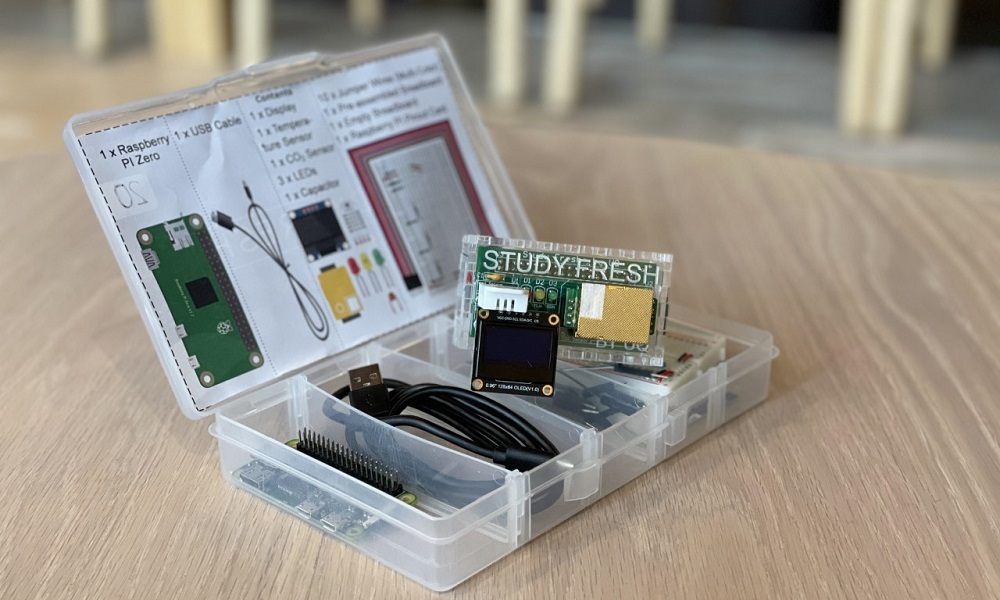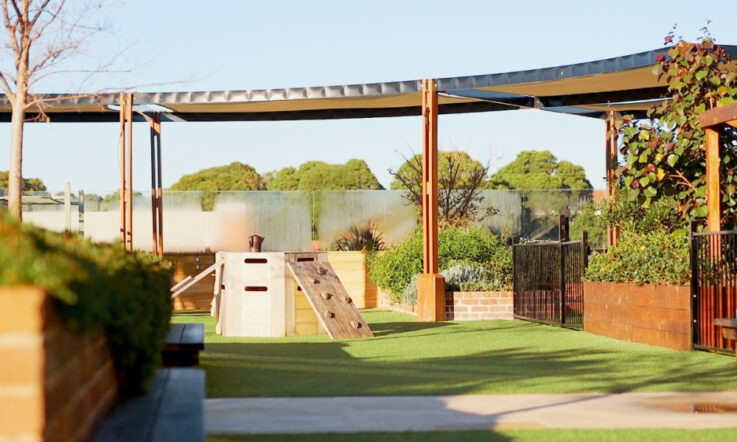Poor indoor air quality is linked to reduced productivity, concentration and decision-making ability in classrooms. The COVID-19 pandemic has thrust the importance of ventilation into the spotlight, as the virus is proven to be more easily transmitted in poorly ventilated spaces.
Researchers from the University of Queensland are determined to help teachers improve the air quality in their classrooms, improve students’ cognitive performance and decrease the risk of contracting COVID-19 at the same time.
Dr Stephen Snow is a Research Scientist at CSIRO and a former Research Fellow at the University of Queensland. In 2020, he established Study Fresh, a citizen scientist project where students learn about ventilation and the importance of indoor air quality. In 2022, Dr Marie Boden came on board and is now leading the project.
As part of the Study Fresh project, the researchers run workshops with schools where students build their own indoor air quality sensors to monitor the air quality in their classrooms.
Snow and Boden also worked with colleagues to conduct research in 67 classrooms in Brisbane, where they measured air quality by collecting data from carbon dioxide (CO2) logging. Because humans exhale CO2 in their breath, CO2 when measured indoors is a good indication of ventilation and hence indoor air quality. They found that over the (typically 6-8 week) logging periods more than half of the monitored classrooms experienced between 5 and 50 separate instances of CO2 concentrations exceeding 1800 parts per million (ppm) – a level at which aspects of cognitive performance can be affected and which is considered high risk for COVID-19 transmission.
‘Study Fresh has got two components – the research component where we went and measured indoor air quality in 67 classrooms and the non-research component which was going in and doing the workshops with children, where they build their own indoor air quality monitors,’ Snow tells Teacher.
Impact on health and wellbeing
Indoor air quality refers to the condition of the air inside a building or closed space and its effect on human health and wellbeing, quantified by the presence of pollutants and impurities, the report explains. Poor ventilation can lead to poor air quality because stale air isn’t able to escape.
‘If you think of a classroom with 25 kids in it, all of them breathing out, you get to a point where if there’s insufficient ventilation, you’re rebreathing air that someone has recently breathed out!’ Snow says.
He adds that classrooms retrofitted with reverse cycle air conditioners improve comfort for students and teachers, but can have a detrimental effect on air quality if they have been installed without adequate provision for ventilation.
‘…because with air conditioning, windows in classrooms tend stay shut for much longer than they used to, compared to the days of ceiling fans and open windows.’
Snow says that, unlike heat or cold stress which we become aware of quickly, humans can’t always sense poor air quality until it is bad enough to affect our work performance and capacity to concentrate, which is why it is vital to measure it.
‘That’s why we’ve all had the experience of walking into a meeting room or a classroom and thought – “this smells pretty bad!”, but the people in that room haven’t noticed,’ he explains.
Poor ventilation also increases the risk of contracting airborne viruses like COVID-19. International research has confirmed that airborne particles exhaled in an infected person’s breath is a primary means of disease transmission.
‘COVID has really propelled the importance of indoor air quality because the focus is now on stopping the spread of disease, rather than just people not working very productively,’ Snow adds.
The workshops
Over 1,100 students in years 5-12 across Queensland have participated in workshops delivered by the Study Fresh team. Students are introduced to the fundamentals of indoor air quality – how to self-diagnose a poorly ventilated space and ways to improve the air quality in those spaces. They also discuss environments that use mechanical ventilation, like shopping centres.
Then the students are tasked with building their own air quality monitors using Raspberry Pi micro-computers and connected sensors. They used simple programming in Python to program the Raspberry Pi and collect data from the sensors.
‘We connect it to a computer and they program the Raspberry Pi to actually collect the data, and straight away they start seeing what’s going on and see what the data looks like,’ Boden explains.
‘They’re quite simple little measurements that we are doing because we’re working within the budget and also knew that we needed to do something that could be done in a school environment, so not too expensive.’
Boden says the monitors measure the CO2 concentration, temperature and relative humidity in the classrooms.
‘If the carbon dioxide levels are too high in a room, that’s when we start to get a bit groggy, you feel a bit tired and you find it harder to think clearly. And so those are the levels that we are measuring. We tell the kids the levels they need to look for,’ she explains.
‘Parts per million – we are normally sitting around below 800 ppm indoors and most often you have it going over 1,000 at times. But if you go up to 1,500/2,000 ppm of CO2 indoors, then you definitely need to start thinking about – what’s going on here? And look at opening windows and doors to get more ventilation happening.’
Boden says that the students really enjoy taking part in this hands-on workshop.
‘Kids love the real-world problems and we tell them they’re being citizen scientists. They really like it and it’s not just the little ones that you get on board, the senior kids get really engaged too.’
Strategies for educators
Snow offers some simple strategies for teachers looking to improve the indoor air quality in their classrooms.
‘If you’re not running the air conditioning, keep windows open as much as possible. If you’re running the air conditioning or heating, open windows and doors for a while in between lessons to flush the room out and introduce fresh air,’ he says.
‘Solutions to ventilation problems can be classroom specific, but I will say that every classroom should have a CO2 monitor. Because it makes everyone aware of the indoor air quality and helps occupants self-diagnose problems and test solutions. Even if you were to retrofit mechanical ventilation into a classroom, if it happens to stop working, occupants might not notice unless you’re measuring CO2. Or I’ve heard reports of teachers being like, “the extract is so noisy I’m just going to turn it off ”.
‘Having a CO2 monitor fitted in every classroom supports all types of bespoke solutions, because every classroom is so different.’
Boden agrees that opening windows is the best solution for improving air quality in naturally ventilated classrooms and suggests how this practice can be further supported by active breaks in learning.
‘We worked a lot with existing schools and kids and the best solution is to actually open up the windows, air it out during the breaks when the kids are getting tired. Get them to stand up and go for a quick loop outside, give them some fresh air and air out the classroom at the same time,’ Boden suggests.
References
Snow, S., Danam, R., Leardini, P., Glencross, M., Beeson, B., Ottenhaus, L. M., & Boden, M. (2022). Human factors affecting ventilation in Australian classrooms during the COVID-19 pandemic: Toward insourcing occupants' proficiency in ventilation management. Frontiers in Computer Science, 100.
Consider the strategies outlined by Snow and Boden in today’s article. Which of these could you employ in your classroom to improve indoor air quality?
Think about a time when you noticed students were becoming groggy and were having difficulties concentrating. Had you considered the quality of the air inside your classroom? If you opened a window, did you notice any improvement in the students’ levels of concentration?



